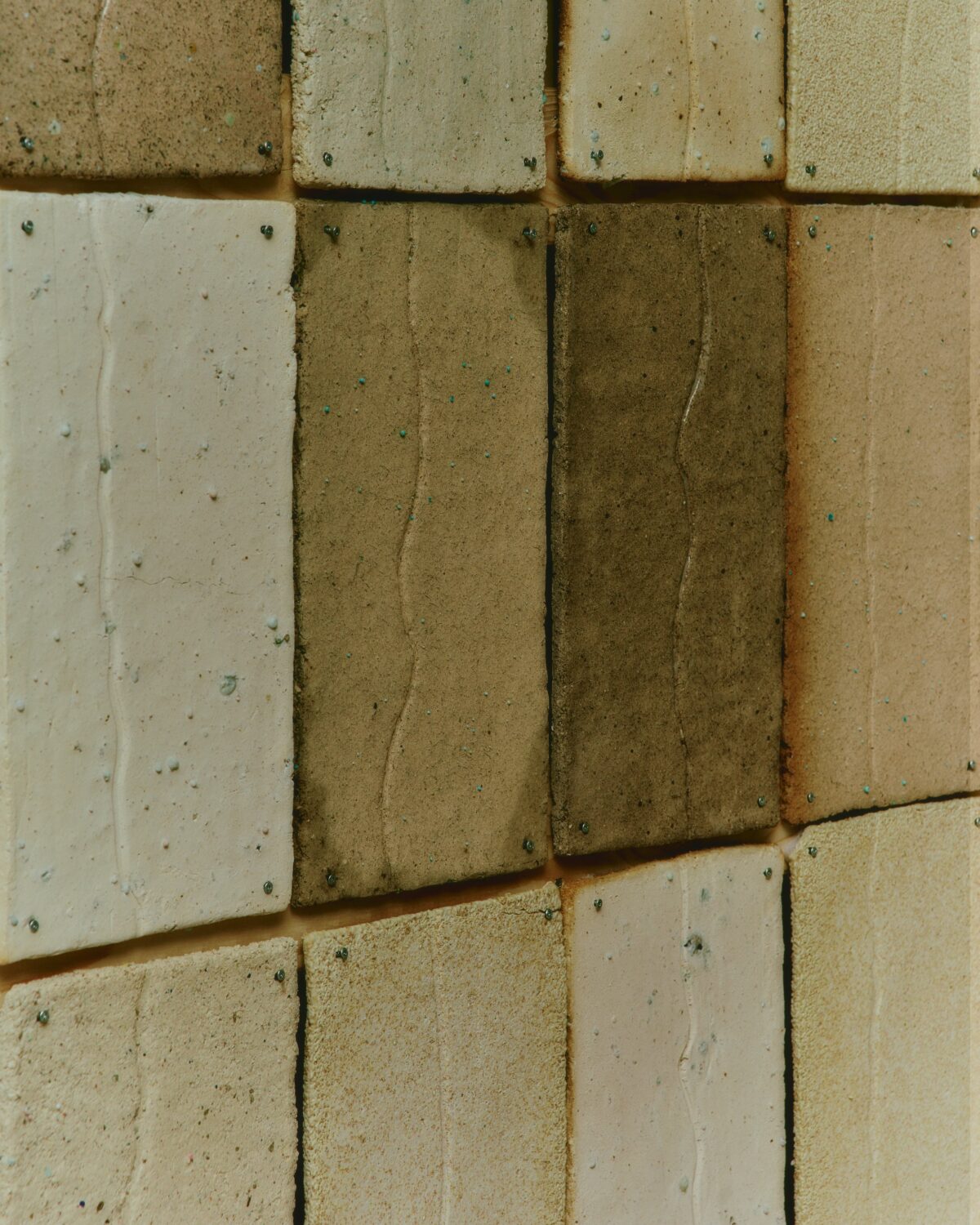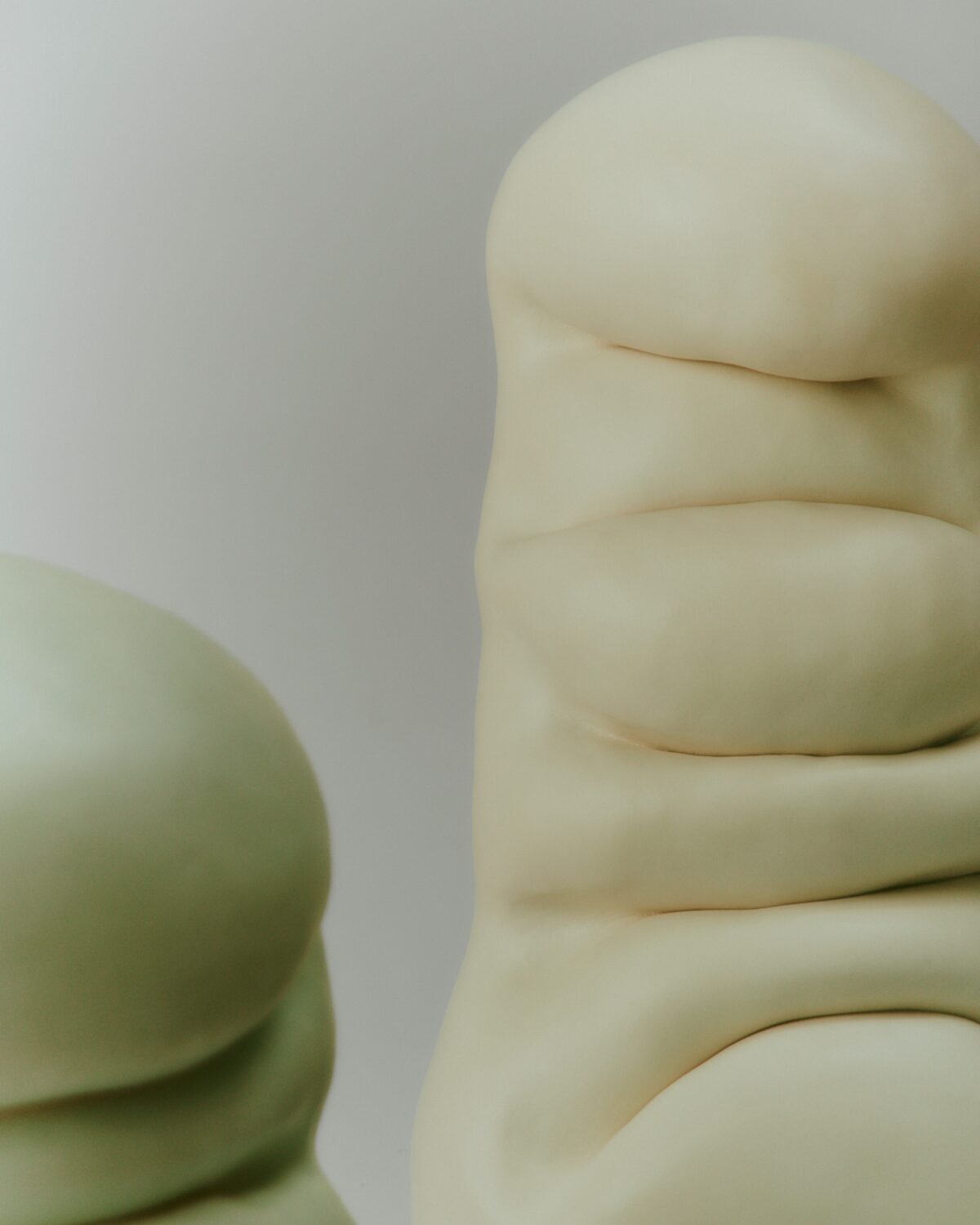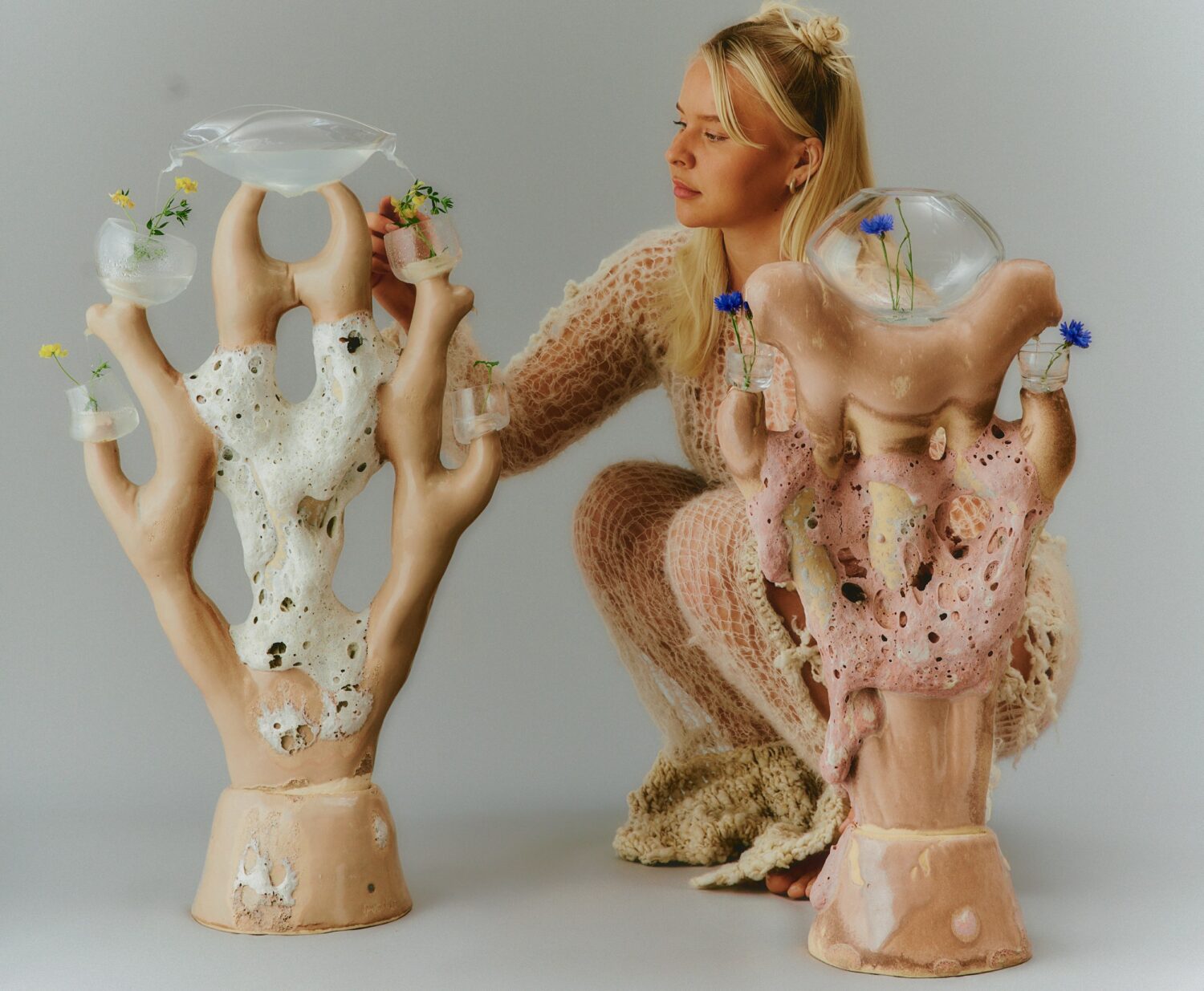The graduate projects can be experienced in the small rooms that surround the main staircase in Clay’s old mansion Grimmerhus. The exhibition spaces themselves create a varied backdrop for the projects, and in some cases the layout and lighting conditions work better with the young potters’ works than in others.
The spatial conditions work best on the eastern side of the villa, and this is also where the entrance to the exhibition is marked by MIN Say’s inviting, round ceramic objects, whose expression and scale invite you to sit on them.

Anna Maria Sand Jensen’s ceramic cladding tiles are made from transformed food scraps, agricultural waste and ceramic waste and are presented in a spatial installation accompanied by a book that thoroughly describes the project’s exploration of recycled materials. In this way, the project points to the interest in sustainable production that characterises ceramic practice in recent years.
Presented in the same room is Anna Sofie Aaskov’s project, which also deals in an interesting way with recycling and overlooked material, but in this case as texture and material presence in the surfaces of traditional pots. And Amalie Addy Egebjerg Jeppesen’s stoneware dishes with built-in ‘body parts’ that float confusedly around the world are also a thought-provoking visualisation of a current theme based on a familiar ceramic type.
The exhibition is of course a communication and a spatial encounter with the works, and exploring the corners of Grimmerhus is an experience in itself. However, the back rooms of the exhibition provide a slightly darker and more cramped context for the works. Fortunately, the exhibition is accompanied by a brochure with photos and descriptions of all 15 projects, where some works appear with more nuances than in the exhibition. Cille Grosell’s work is an example of this, where the imagery conveys the poetic idea of bringing insects and plants together in the sculptures to a greater extent (and perhaps for entirely practical reasons).

The diversity of these and the rest of the works deserves to be experienced at Clay, where you can gain an understanding of the thoughts and themes that move the young ceramicists. In conclusion, I would like to emphasise Julie Røjkjær Pedersen’s two amorphous sculptures, which, with their soft shapes and body folds, have a craftsmanship and physical presence that invites us to reflect on how we reflect ourselves in others and other things. The forms ‘dwell on soft values that we cannot rationalise, but must sense intuitively’, as she herself describes it. This is a very good point in relation to ceramic design, and these two body sculptures manage to bring it out.
Common to all the exhibited projects is that the ceramists themselves have written a short exhibition text to accompany their work and provide an interesting insight into the ideas behind the projects. Emma Blenker Andersen perhaps gives us a key to understanding what is common to the majority of the works on display when she describes her own project as objects that can evoke a sense of wonder and imagination while allowing us to ‘reflect on the deeper meanings that objects can have’.
About the exhibition
The exhibition Bachelor Exhibition 2024 can be experienced at Clay Keramikmuseum Danmark until 24 November 2024. Read more about the exhibition
Related content
A rich world of (many) hybrid bodies and wow effect
Martin Bodilsen Kaldahl’s exhibition Cuts, Stripes and Knots – A Ceramic Retrospective can be seen at Clay until 16 March 2025.



